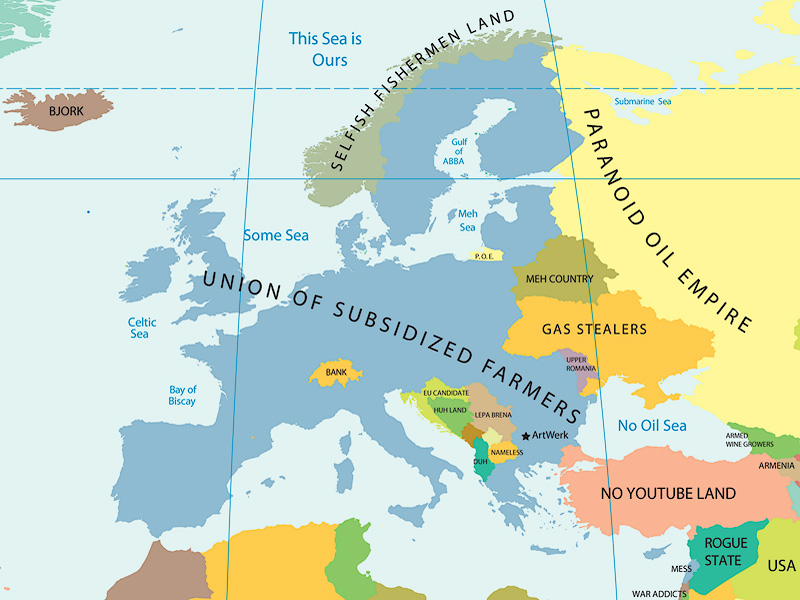[youtube=http://www.youtube.com/watch?v=xm5aoQ0_1_s]From YMFY

Strangely that's something I still miss: your slow, measured stride. Even now I'd try to copy it in case of crisis -
that thoughtful lope towards fire or flood. Of course you were panicking like the rest of us but someone has to take the adult role.
I practise and practise - the steady hand, the cool head, the firm, what's-the-problem-here stroll to the edge of the abyss. - Connie Bensley, from The Spectator, 25 September 2010
I've been surrounded by blue and white china my whole life. Mum is a massive fan - the kitchen has always been packed with jugs, tureens, plates, dishes, and more, sometimes chipped but always loved. Thinking on it, it has been a massive influence on me, the idea that something utilitarian (a plate) can also have aesthetic value. This was drilled into me at an early age when I used to have to eat my food to see which Peter Rabbit plate I had. Then there's The Dining Room Shop - Mum's shop - which has always had gorgeous stuff - some really quite rare and beautiful (I've always liked the old Wedgwood, personally, especially the quite plain Jacobean (?) stuff). Nowadays it's a sort of collective term for knock-offs - usually transfers - of various other patterns. But Willow Pattern is named after an original Chinese design, first engraved by Thomas Minton in 1780. He was then followed by Royal Worcester, Spode, Adams, Wedgwood, the whole gang (Burgess and Leigh's modern Willow has been in continuous production since 1922).
There's a story behind the original pattern, and it's quite beautiful. Look at the plate first. It might look like a single image, but there's a whole narrative happening inside it.

Once upon a time, there was a very grand Mandarin (that's his palace under the big tree) who had a stunning daughter, Koong-se. She was so beautiful that he had knew he could do very well out of marrying her to the right person.
He also had a secretary, Chang. A personable young man who, while doing the Mandarin's acccounts, full head over heels with Koong-se, and she with him. It was proper love too. Not an infatuation but an all-consuming need. When he found out, the Mandarin was livid. How could this lowly secretary ever dream he was suitable for his daughter? Something had to be done.
Poor Chang was banished, and a huge fence was build around the gardens of the Mandarin's palace - you can see it at the bottom of the dish - so that Chang could not get in, and Koong-se was trapped inside, a bird in a gilded cage.
One day she was standing at the water's edge when she saw something in the water - a shell, with tiny little sails on it. She picked it out of the water and found inside a poem, and bead that she had given her lover. Chang was outside, and he still loved her.
But then - terrible news - the Mandarin came in to tell her that he had found a suitable match. Ta-jin, a powerful warrior Duke. Not only that, but he was on his way to meet his betrothed, with loads of jewels for her (that's him on the boat on the left hand side, making his way to the palace).
Chang had a plan though. Disguised as a servant, he snuck in to that night's banquet, and up to Koong-se's room. They kissed and decided to make a break for it. The Mandarin and Ta-Jin had drunk themselves into a stupor, and the two lovers quietly crept out. But just as they were leaving, the Mandarin woke up and tore after them (that's him chasing them over the bridge - she's holding jewels and I think the Mandarin has a whip).
They just managed to escape, and hid with a maid who the Magistrate had already fired for conspiring with the lovers. Koong-se had given the casket of jewels to Chang, so the Mandarin, who was also a magistrate, swore that he would use the jewels as a pretext to execute Chang as a thief when he caught him.
One night the Mandarin's spies reported that a man was hiding in a house by the river (on the plate it's just behind the boat) and the Mandarin's guards raided the house. But Chang had jumped into the ragging torrent and Koong-se thought that he had drowned.
Some days later the guards returned to search the house again. While Koong-se's maid talked to them, Chang came by boat to the window and took Koong-se away to safety.
They settled on a distant island, and over the years Chang became famous for his writings. This was to prove his undoing. The Mandarin heard about him and sent guards to destroy him. Chang was put to the sword and Koong-se set fire to the house while she was still inside.
The two birds on that plate? The gods, touched by their love, immortalised them as two beautiful doves.
.
There's another story to the plate - a secret Shaolin legend.The Shaolin Monastery is burned by the Imperial troops of the Manchu rulers, called invaders by Chinese nationalist and later communist factions. Souls of the dead monks take a boat to the isle of the Blest. On the bridge are three Buddha awaiting the dead souls: Sakyamuni, the Buddha of the Past; Maitreya, the Buddha of the Future; and, Amitabha, the Ruler of the Western Paradise. Beyond them is the City of Willows – Buddhist Heaven. The doves are the monks' souls on the journey from human to immortal life.
[I might get Mum to check this ;) - oh, and with all fables and legends, there's always another version, so apologies if this isn't the one you know]

Realistic and quite sad - once I got past my unfortunate "ohmygod heroin chic is just *so* 1998" reaction, I looked properly, and I really like these. Ryan Shultz is an American artist (duh) - go to his website and check out more of his pictures, there's a great triptych on there.

AJ Fosik works mainly with wood. I've written about him before. It's bonkers stuff. These are updated pics though. Found this on BOOOOOOOOOM. Click the pic to see the rest, or click here to see Fosik's full Flickr stream (trust me, it's worth it).

Design Boom recently featured this simple but incredibly powerful installation by Brooklyn-based artist Sebastian Errazuriz. Using the wall outside his studio, he's created a simple tally of some sobering numbers: military combat deaths in Iraq in 2009, and military suicides in 2009.
From Design Boom:
'When I first found the overall statistics that summed the 304 suicides by US soldiers during 2009, I was shocked. I tried to find a number to compare that statistic. To my surprise the suicide statistic doubled the total of 149 US soldiers that had died in the Iraq war during 2009 and equaled the number of soldiers killed in Afghanistan.'
Errazuriz's first instinct was to post the statistic on facebook—dumbfounded by the lack of response and interest, he bought can of black paint and decided to 'post' the news in the real world on his own wall outside his studio in Brooklyn. Equipped with a ladder, he marked a black strip for every dead soldier, until both the suicide rates and war rates occupied the entire wall and were registered as a single image.
(Via)
https://docs.google.com/present/embed?id=df7rw7vz_338cz6ngnd6&size=m Warning: this will make you procrastinate
[youtube=http://www.youtube.com/watch?v=DX1iplQQJTo] Of course, this isn't the first time the show has taken a swipe at Fox: the cartoon has parodied Fox News, while the network's owner, Rupert Murdoch, has appeared in the show as a "billionaire tyrant".
It is the first time an artist has been involved in the opening credits of the show, credited with being the most successful television brand of all time. Al Jean, The Simpsons executive producer, joked: "This is what you get when you outsource."
Banksy is said to have been inspired by reports that Simpsons characters are animated in Seoul, South Korea.
The sequence is said to have been one of the most closely guarded secrets in US television – comparable to the concealment of Banksy's own identity.
The episode, MoneyBart, will be shown in the UK on 21 October.
Yanko Tsvetkov has produced a fantastic series of maps looking at the way we see stereotypes. You can see the full set and buy large prints on his website - but these are some of my favourites.
 Where I Live
Map. Digital illustration. Editorial for Süddeutsche Zeitung, June 2009
Where I Live
Map. Digital illustration. Editorial for Süddeutsche Zeitung, June 2009
 Europe according to Germany
Map. Digital illustration.
Europe according to Germany
Map. Digital illustration.
 Europe according to Italy
Map. Digital illustration.
Europe according to Italy
Map. Digital illustration.
 Europe according to Britain
Map. Digital illustration.
Europe according to Britain
Map. Digital illustration.
 Europe according to Gay Men
Map. Digital illustration.
Europe according to Gay Men
Map. Digital illustration.
(ps, thanks for the spot, Max)
 Click image to view large (recommended). By XKCD.
(ps - thanks for the spot Max!)
Click image to view large (recommended). By XKCD.
(ps - thanks for the spot Max!)

| [youtube=http://www.youtube.com/watch?v=CD7eagLl5c4] |
“Professor Fletcher’s invention of the CellScope, which is a Nokia device with a microscope attachment, was the inspiration for a teeny-tiny film created by Sumo Science at Aardman. It stars a 9mm girl called Dot as she struggles through a microscopic world. All the minuscule detail was shot using CellScope technology and a Nokia N8, with its 12 megapixel camera and Carl Zeiss optics.” — Nokia

From the World Famous Design Junkies comes this work of genius, The Grand Taxonomy of Rap Names.

 Jeremy Deller is "an artist of the real". One of his recent projects was to take a car destroyed in a truck bomb attack in Baghdad that killed 38 people. It's pretty heavy stuff. The tortured, charred chassis brings home what must happen to the bodies of those maimed and murdered by such attacks. It is about as close as you'd ever want to get.
Jeremy Deller is "an artist of the real". One of his recent projects was to take a car destroyed in a truck bomb attack in Baghdad that killed 38 people. It's pretty heavy stuff. The tortured, charred chassis brings home what must happen to the bodies of those maimed and murdered by such attacks. It is about as close as you'd ever want to get.
Look up the work, called "it is what it is", on his website and you will also see pictures he has taken of people's reactions to it.

[vimeo=http://vimeo.com/14175905]
 Marriage is like putting your hand into a bag of snakes in the hope of pulling out an eel.
Marriage is like putting your hand into a bag of snakes in the hope of pulling out an eel.
Men of lofty genius when they are doing the least work are most active.
It had long since come to my attention that people of accomplishment rarely sat back and let things happen to them. They went out and happened to things.
Life is pretty simple: You do some stuff. Most fails. Some works. You do more of what works. If it works big, others quickly copy it. Then you do something else. The trick is the doing something else.
Leonardo da Vinci
 The gang's all there.
The gang's all there.
'nuff said. [audio http://dysonology.files.wordpress.com/2010/08/jimi_hendrix_-_little_wing.mp3]


